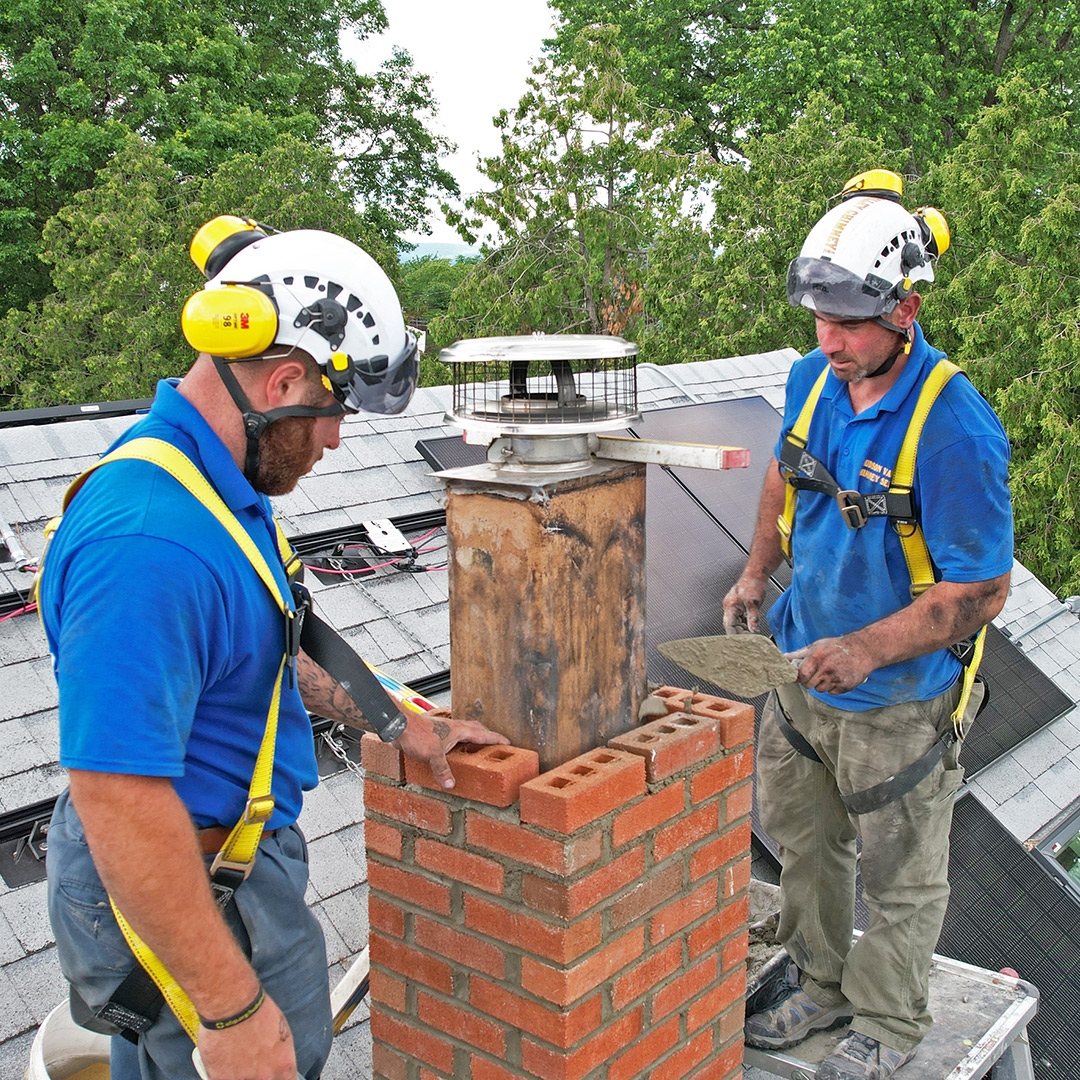Set Up a Chimney Sweep Today for a Clean and Safe Fire Place
Set Up a Chimney Sweep Today for a Clean and Safe Fire Place
Blog Article
Opening the Secrets of Lasting Masonry Construction Practices for Eco-Friendly Buildings
In the realm of modern-day building, the quest of sustainable methods has become paramount. Amongst the myriad approaches to eco-friendly building, lasting masonry building stands out as a tried and true and durable approach that holds a wealth of untapped possibility. From the option of products to ingenious building and construction methods, the keys to achieving sustainability within masonry building are multifaceted and interesting. By checking out the benefits, materials, methods, and future patterns of sustainable stonework, a much deeper understanding of just how these techniques can shape the future of environment-friendly structures arises.
Advantages of Sustainable Masonry Building
Accepting sustainable stonework building techniques not just reduces ecological influence but likewise uses lasting financial benefits to building contractors and neighborhoods. By utilizing products like recycled bricks, blocks, and rocks, home builders can dramatically reduce the carbon footprint of their tasks while promoting source performance. Additionally, lasting masonry building and construction techniques, such as correct insulation and thermal mass buildings, can boost power efficiency within structures, bring about minimized operational prices in time.
In addition, the sturdiness and durability of masonry structures add to long-lasting economic advantages. Structures created making use of sustainable stonework techniques typically need less repair and maintenance, converting to cost financial savings for contractors and building proprietors. The long life of masonry products additionally guarantees that structures continue to be secure and secure, decreasing the requirement for frequent renovations or replacements.
Eco-Friendly Masonry Materials
Using eco-friendly stonework materials is a crucial action in the direction of boosting the sustainability of construction practices and reducing environmental influence while taking full advantage of long-lasting financial advantages. Lasting masonry materials are sourced, created, and used in a manner that reduces overall ecological influence. Materials such as recycled bricks, recovered stone, and sustainable concrete blocks are ending up being progressively prominent choices for eco-conscious home builders. Recycled bricks, as an example, not just divert waste from garbage dumps yet additionally call for much less power to generate compared to brand-new blocks. Recovered rock uses an unique aesthetic charm while minimizing the requirement for new quarrying. Sustainable concrete blocks include recycled accumulations and might feature enhanced insulation residential properties, contributing to energy performance in structures.
In addition, natural products like adobe, rammed planet, and straw bundles provide excellent thermal mass residential or commercial properties, minimizing the requirement for heating and cooling down power. These products are typically locally offered, advertising local economic situations and reducing transportation-related carbon exhausts. By choosing environmentally friendly stonework products, building and construction projects can substantially minimize their ecological footprint and add to the creation of much healthier, more sustainable developed atmospheres.
Energy-Efficient Stonework Techniques
Energy effectiveness plays an important duty in enhancing the sustainability of masonry building practices. By carrying out energy-efficient masonry methods, building contractors can substantially minimize the total power usage of a structure, resulting in reduced functional expenses and a smaller ecological footprint. One essential energy-efficient stonework method is the usage of thermal mass, which includes incorporating thick materials like concrete or block into the building's structure to soak up and store warm. This assists regulate interior temperatures, decreasing the need for mechanical heating and cooling systems.

Advancements in Sustainable Stonework
Recent improvements in sustainable stonework techniques have brought about ingenious strategies that are reshaping the building market. One such development masonry contractor is the growth of self-healing concrete, which uses bacteria embedded within the concrete to heal cracks autonomously. This development not only lowers maintenance expenses but additionally improves the resilience of masonry structures, adding to their sustainability.
An additional significant innovation is using recycled accumulations in masonry building - masonry contractor. By including products such as crushed ceramic waste or recycled glass right into concrete blends, building contractors can lower the environmental influence of building and construction tasks while preserving architectural stability. This practice not only draws away waste from garbage dumps yet also saves natural resources, making it an essential advancement in sustainable stonework construction
Additionally, the integration of electronic layout devices, such as Structure Details Modeling (BIM), is transforming the way stonework structures are prepared and created. BIM permits for more exact calculations, minimized product wastefulness, and enhanced energy performance, inevitably bring about even more lasting structure methods. These developments jointly symbolize an appealing future for sustainable masonry building in the age of environmentally friendly buildings.
Future Trends in Stonework Sustainability
With the innovative strides made in sustainable masonry practices, the future patterns in masonry sustainability are positioned to additional reinvent the building industry. Among the essential patterns shaping the future of masonry sustainability is the raised assimilation of innovation. Improvements such as Building Information Modeling (BIM) and virtual fact simulations are being used to enhance stonework building and construction procedures, causing minimized product waste and boosted energy effectiveness in buildings.
Additionally, the development of novel sustainable products is readied to play a significant duty in improving the eco-friendliness of stonework building. masonry contractor. Advancements like self-healing concrete, recycled aggregates, and bio-based binders are gaining grip for their capacity to decrease ecological influence while keeping architectural stability

Verdict
In conclusion, sustainable stonework building and construction methods supply numerous advantages for environment-friendly structures. masonry contractor. Advancements in sustainable stonework are constantly being established to additionally enhance the environmental performance of structures.
Report this page